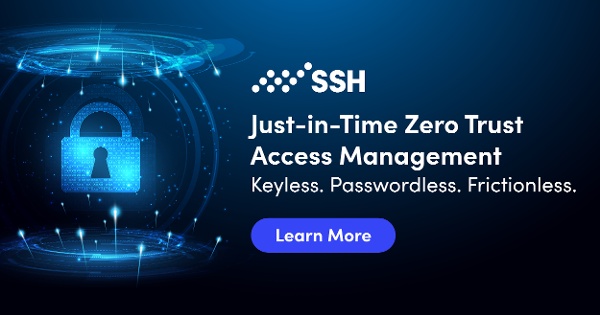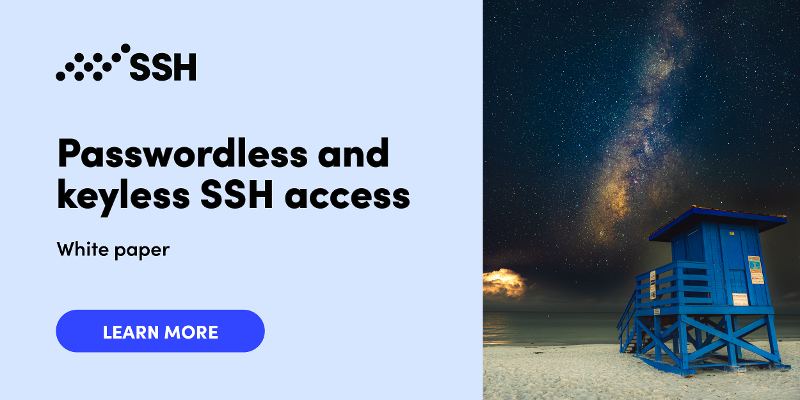What is Credential Management?
Credentials are the keys to your organization’s confidential resources — here’s how to treat them with the care and attention they require.
Passwords, certificates, keys — whatever authentication measures organizations use to identify and validate user access, such credentials are known gateways to reservoirs of valuable and highly sensitive information, making them a top target for online malicious actors. In fact, a recent Verizon report found that 61 percent of all breaches involve credentials, making it vital that these assets are properly managed and protected.
However, adequate credential management is easier said than done. With organizations housing hundreds of current and expired credentials for every user and device, updating passwords, usernames, and keys throughout their life cycles is an impossible task to perform through manual labor alone. But with a credential management system in place, tools for automation and centralization provide the visibility and coverage organizations need to render their credentials completely inaccessible to unauthorized users.
Here’s a breakdown of how a credential management system works, features to look for when implementing a CMS solution, and how enterprises can further fortify confidential data by migrating to a credential-less environment.
Contents
What is a Credential Management System?
Types of Credentials
What Credential Management Entails
Why is Credential Management Important?
Best Practices for Credential Management
What is a Credential Management System?
Benefits of Implementing a Credential Management System
Features to Look For in a Credential Management System
The Future is Credential-less
Say Goodbye to Credentials with SSH

What is Credential Management?
Managing credentials involves far more than just compiling a list of working usernames and passwords for all users and their respective accounts. Since credential types may vary depending on the platform being accessed and the degree of privilege a user has, it’s important that you understand the nature of credentials in their various forms so that you can better shield them against vulnerabilities.
Types of Credentials
Credentials are user-generated or computer-generated bits of information that help identify, validate, and define users and their access privileges as they connect to a network, application, or web-based platform. There are four primary types of credentials used today:
- Passwords: String combinations of letters, numbers, and characters that are required to reach a certain length and complexity to be effective. They’re typically paired with usernames for login purposes.
- Certificates: Electronic documents composed of a public key and a digital signature that are signed by a certification authority to verify the identity of a user logged onto a specific device.
- Tokens: Encrypted strings of characters that authorize a user’s access privileges throughout an active session. Tokens are distributed to users after a successful login attempt.
- Keys: A pair of encrypted, computer-generated complementary strings, usually 2,048 bits long, that consist of randomized numbers, letters, and characters. Keys are used in various applications, but they’re mainly used for identity authentication.
What Credential Management Entails
Credential management is the ability to adequately organize and secure credentials responsible for identity authentication and access authorization by monitoring and mitigating vulnerabilities throughout their life cycle.
For proper coverage, administrators must consider the relationships between users, their preferred devices, and the entities they connect to. Moreover, credential management requires that administrators work in tandem with encryption components set by public key infrastructures (PKIs) — namely by detailing the policies and parameters that govern identity-based privileged access and authentication.
Why is Credential Management Important?
Credentials can provide direct access to an organization’s sensitive and personal data, making them valuable tools for hackers hoping to infiltrate unauthorized areas under the guise of an authorized user. From leveraging human error to bypassing login page lockouts, cybercriminals have developed cunning and deceptive ways to carry out their attacks undetected.
Credential Harvesting
With credential harvesting, malicious actors embrace various techniques to create a running list of active username and password pairs, including man-in-the-middle attacks, traditional brute force methods, and DNS spoofing. For example, hackers may embed fake links into legitimate online PDF documents, send virus-ridden emails posing as trusted employees and company affiliates, or even deploy a malicious network that looks like a reliable WiFi source. The goal is to gather enough username-password combinations to successfully perform a credential-stuffing operation.
Credential Stuffing
Here, attackers use all the credentials they’ve harvested to conduct a large-scale spraying attempt. With the help of bots, hackers input stolen credentials into as many accounts as possible, knowing that users tend to reuse passwords and usernames across various applications. Today’s bots can also automatically adopt the appearance of different IP addresses to bypass lockout policies and perform unlimited attempts without being blocked or flagged, making it difficult for organizations to detect anomalous behavior before it’s too late.
Credential Abuse
Once an adversary has made their way into a user’s account, credential abuse ensues: financial information is stolen, personal data is compromised, confidential company insights are exposed, and the reputability of the enterprise is tarnished. However, there are several best practices to keep in mind to prevent attackers from ever getting to this point.
Best Practices for Credential Management
There are responsibilities, both at the user and organization levels, that require strict adherence to ensure optimal data security and breach prevention. From a user standpoint, the key is to practice sound IT hygiene. This includes:
- Refraining from sharing credentials
- Avoiding the reuse of passwords across platforms
- Defaulting to browser-generated credentials to ward off brute force attacks
- Notifying administrators of access privileges that go beyond an assigned role’s tasks
- Keeping credentials private and inaccessible to other internal users
- Working strictly on assigned devices fortified with security measures and managed via CMS
While these measures help to drastically reduce the prevalence of human error, there’s still a strong possibility of employees accidentally leaking or exposing credentials. After all, no one is perfect, and in an environment that calls for multi-tasking and high productivity, mistakes are bound to happen. Therefore, it helps to have additional procedures in place to provide a reliable layer of security, even when a vulnerability caused by human error arises.
Such procedures fall under the responsibility of administrative leaders with the most oversight of their organization's operational and IT infrastructure. Best practices that admins can perform on their end to keep credentials safe include:
- Transitioning to a Zero Trust approach in all security applications
- Deploying detailed and strict password policies to inhibit the use of weak credentials
- Leveraging multi-step authentication features, such as two-factor authentication, using biometrics or device tokens
- Auditing, tracking, and logging all user activity surrounding credential use
- Utilizing a credential management system to automate lifecycle processes at scale and with accuracy
As mentioned, credential management systems further enhance data security by processing, organizing, and updating enterprise-wide credential inventories with speed and agility — but not all of them are built alike.
What is a Credential Management System?
A credential management system, also known as a CMS, is a software solution consisting of a centralized interface with customizable tools that assist admins with comprehensive credential governance. For a CMS solution to be effective, however, it needs to fully support internal best practices, adapt to the scalability of the organization using it, integrate seamlessly into existing applications and platforms, and provide user-friendly navigation features.
Benefits of Implementing a Credential Management System
Besides extending visibility into an organization’s vulnerabilities and lingering threats, a CMS offers increased productivity. For example, a CMS can continuously run through entire corporate credential directories for full management coverage, while following enterprise-specific security policies and settings — greatly reducing administrative workloads. Users can also feel more confident knowing that a security net is ready to catch any credential leaks or unauthorized access, even when they’re exercising caution on their end.
Furthermore, a CMS can cut down on IT costs by eliminating the need for sophisticated security equipment and extensive infrastructural support systems that often require additional manpower to operate.
Features to Look For in a Credential Management System
When searching for the best comprehensive CMS solution, it’s important to consider how well it integrates into your existing operational framework, how well it adapts to personalized configurations, and how well it prepares your enterprise for future threats. Look for characteristics and features such as:
- Granular Handling: Management tools can generate, distribute, organize, and revoke credentials down to the individual user/device level with real-time accuracy.
- Automation: Automated features simplify the process of organization-wide management while keeping your business compliant. This also helps with continuous auditing and session recording.
- Machine Maintenance: This keeps machine-to-machine interactions running smoothly and safely, with regular encryption and protocol checks for latency prevention.
- Zero Trust Compatibility: Zero Trust embraces a “never trust, always verify” approach by implementing just-in-time access and ephemeral certificates and additional means of authentication.
- Threat Mitigation: This feature identifies and flags security risks and policy violations for a stronger, impenetrable credential inventory.
- Credential-Free Security: Migrating to a credential-less environment involves transitioning credential-reliant ecosystems into future-proof environments so that credentials are no longer at risk of compromise.
Once your organization perfects its credential management system, your admins will better understand all the active credentials being used and those needing to be retired. However, to defend against future threats, the best option is to phase credentials out completely. With the right tool, this can be achieved at a pace that suits you.
The Future is Credential-less
The best way to protect your data is to eliminate credentials that adversaries could exploit, but this doesn’t mean doing away with identity-based authentication measures altogether. In a passwordless and keyless landscape, ephemeral certificates and cryptographic algorithms play a central role, relying on automation and efficiency rather than user-heavy management. This significantly minimizes security risks associated with password sharing, neglected IT practices, and insufficient security training.
Shifting to a credential-less future also means:
- Reduced credential management costs
- Elimination of password vaults and credentials rotation
- Faster and safer device-initiated login processes
- Cleaner data inventories and directories
- Better security compliance and alignment
- Easier threat detection and recognition
Say Goodbye to Credentials with SSH
With SSH, you can trust that your data is under lock and key without the need for extensive intervention and engagement. Our Zero Trust Access Management relies on just-in-time, Zero Trust principles to restrict unauthorized logins and access, regularly audit user activity, and flag unusual behavior. The solution also supports traditional authentication measures while providing the tools and resources necessary to transition smoothly to a hybrid environment where some of your passwords and encryption keys are still managed — but eventually, you will operate in a mostly credential-less fashion.
Ready to level up your security network? Contact us today to learn more about how Zero Trust Access Management can better protect your organization’s assets against the threats of the present and the future.

